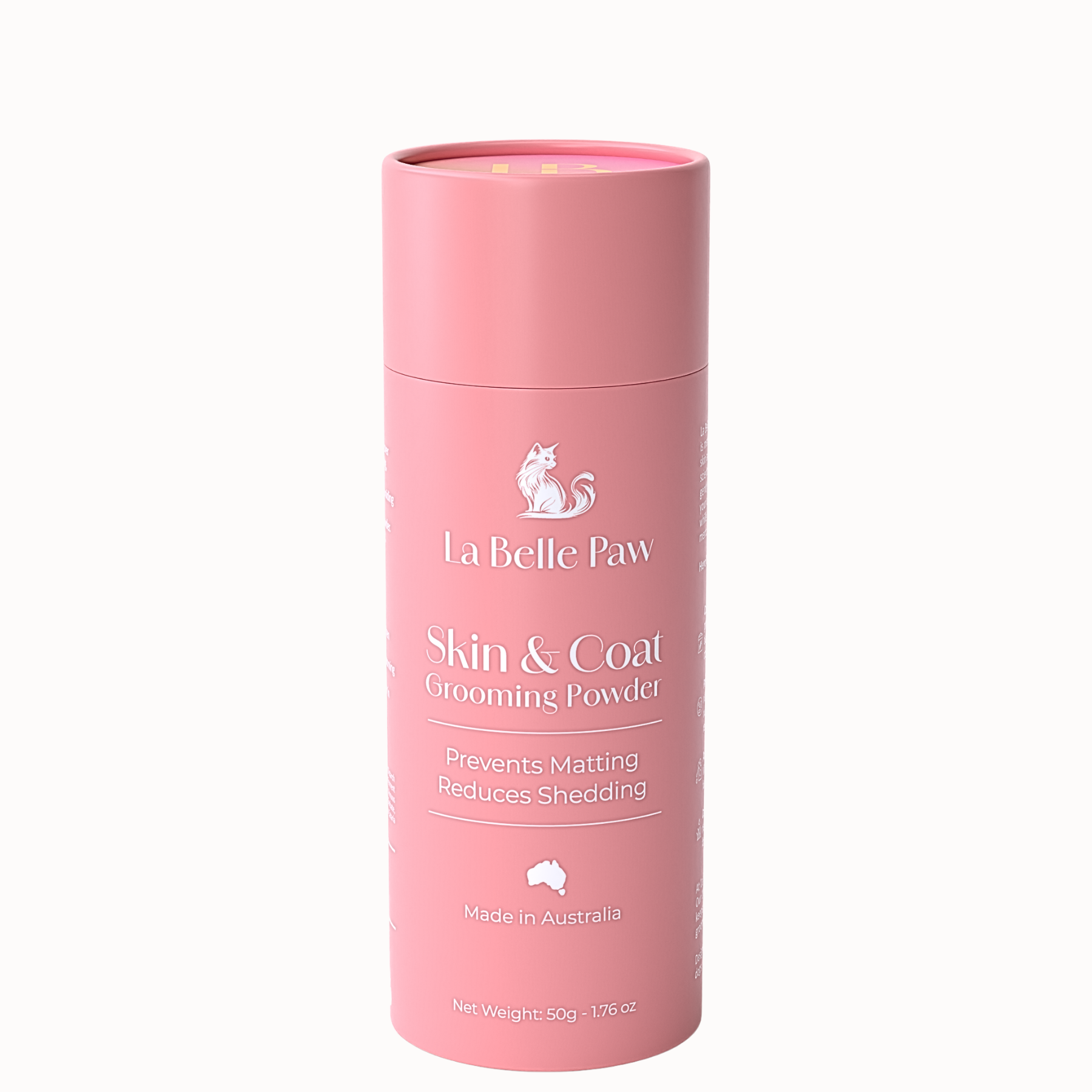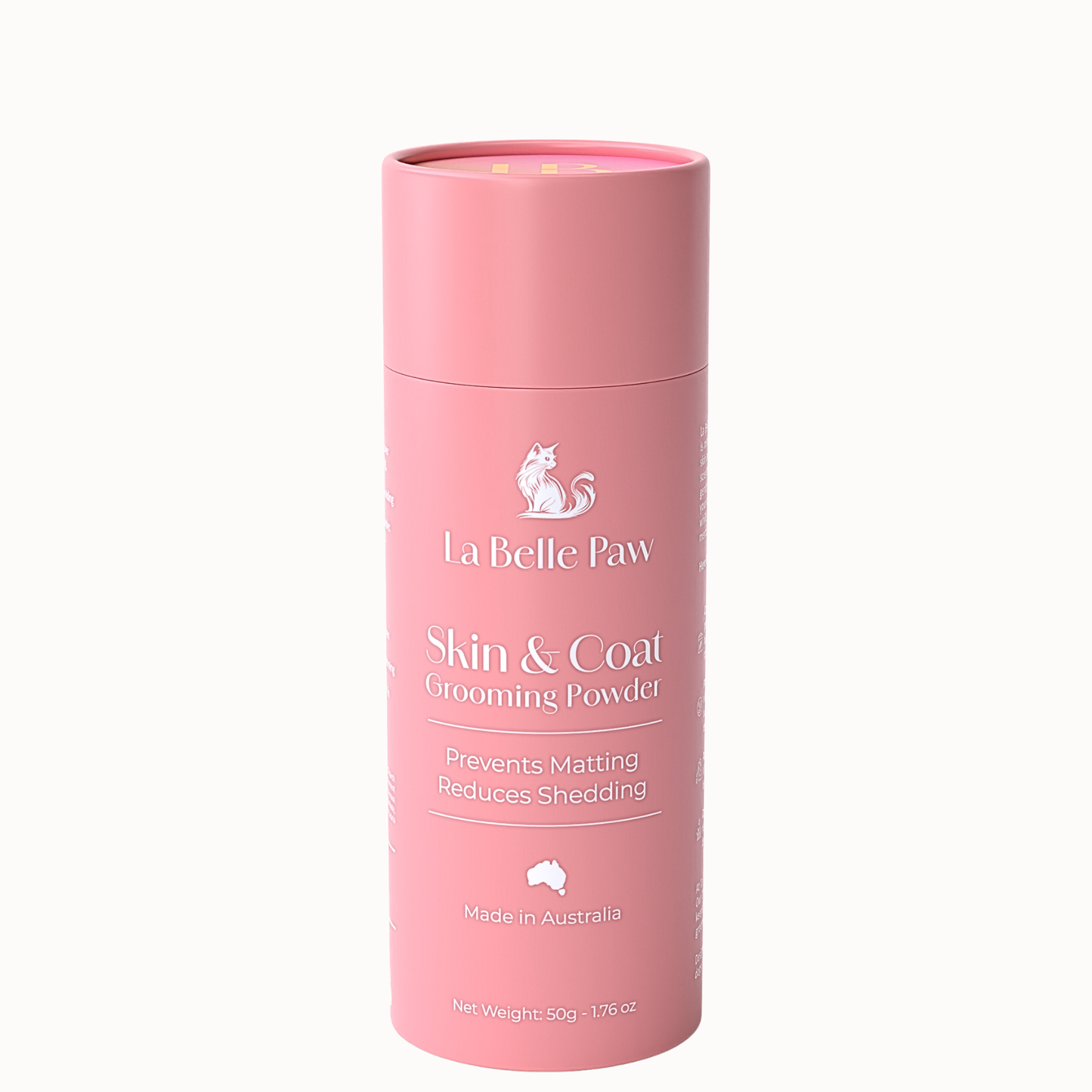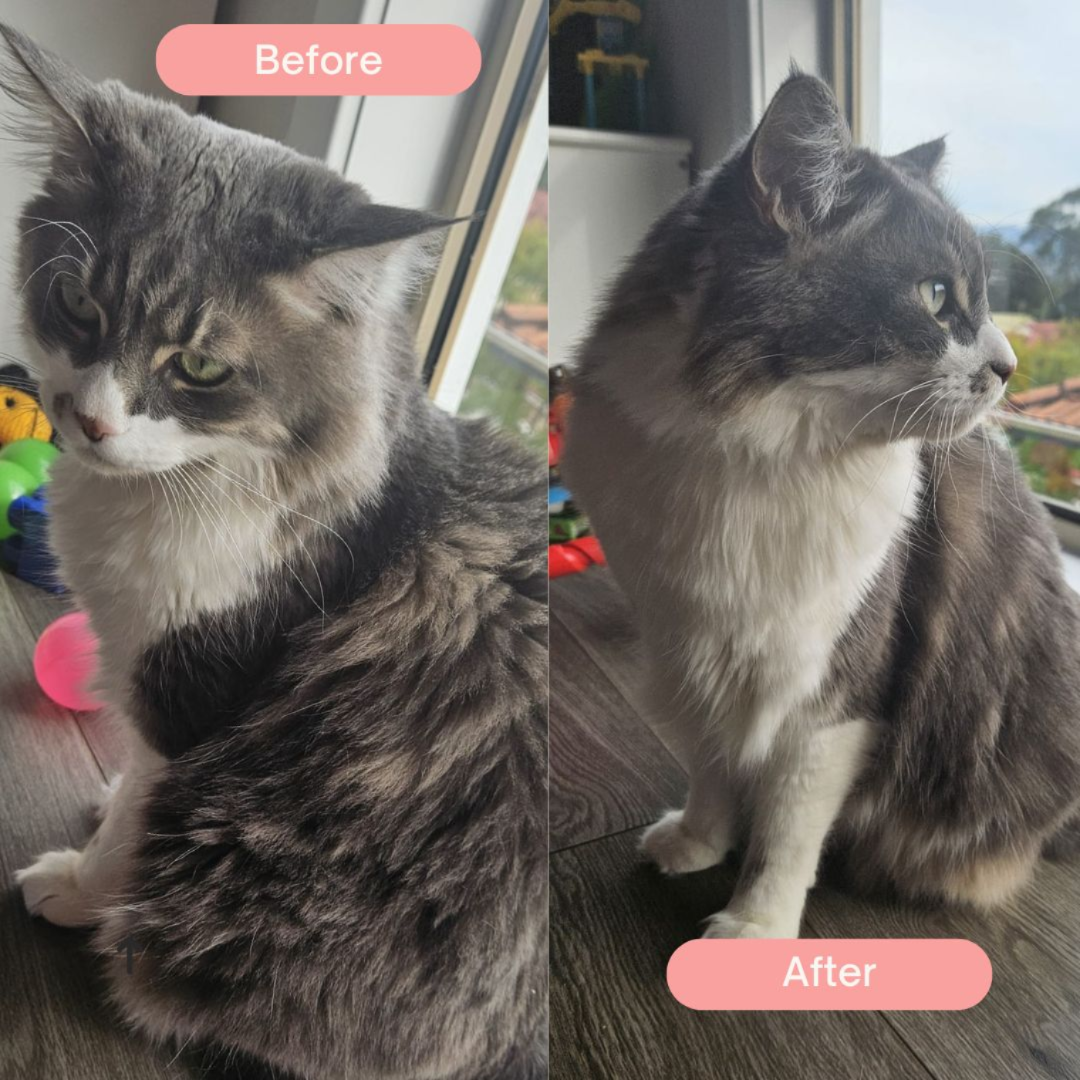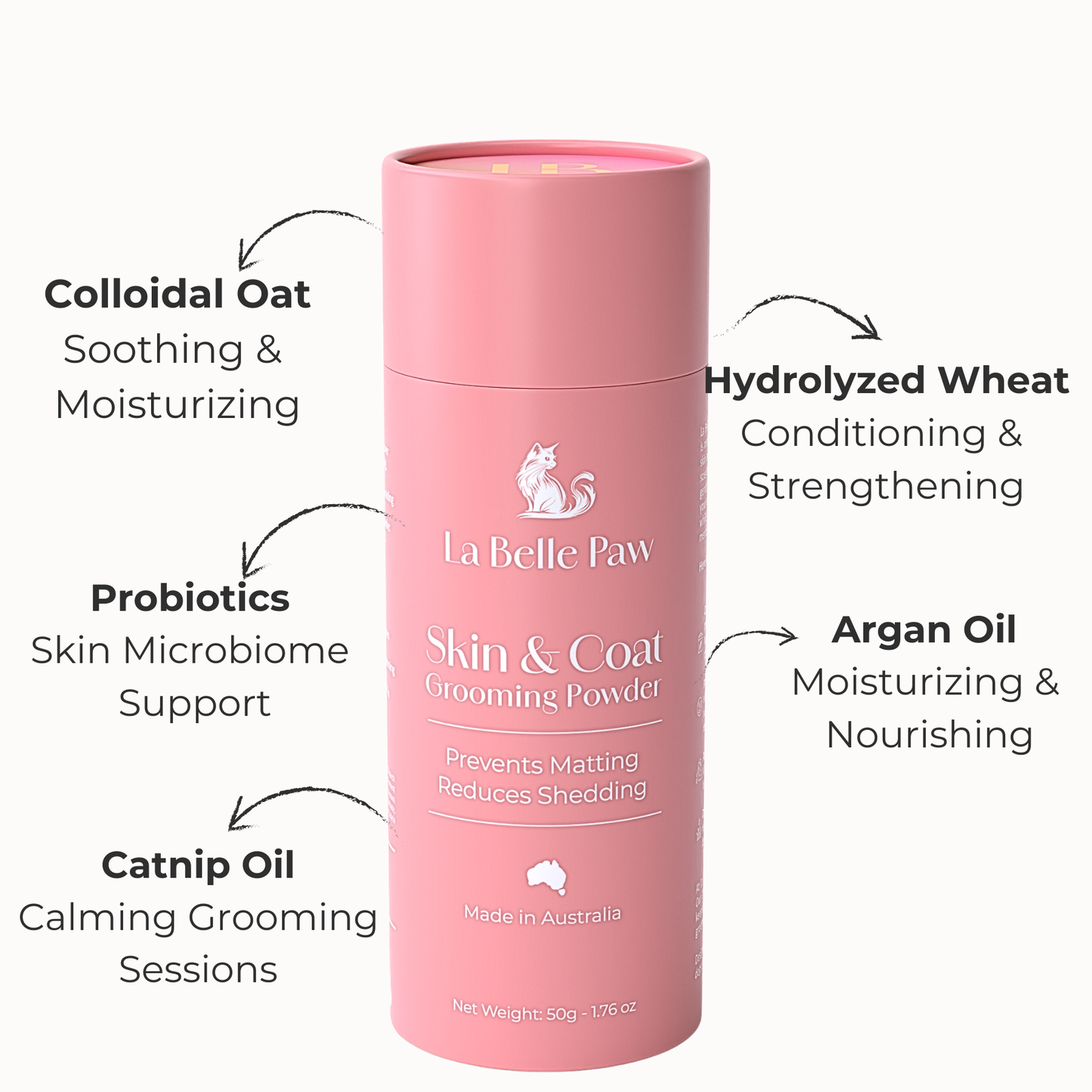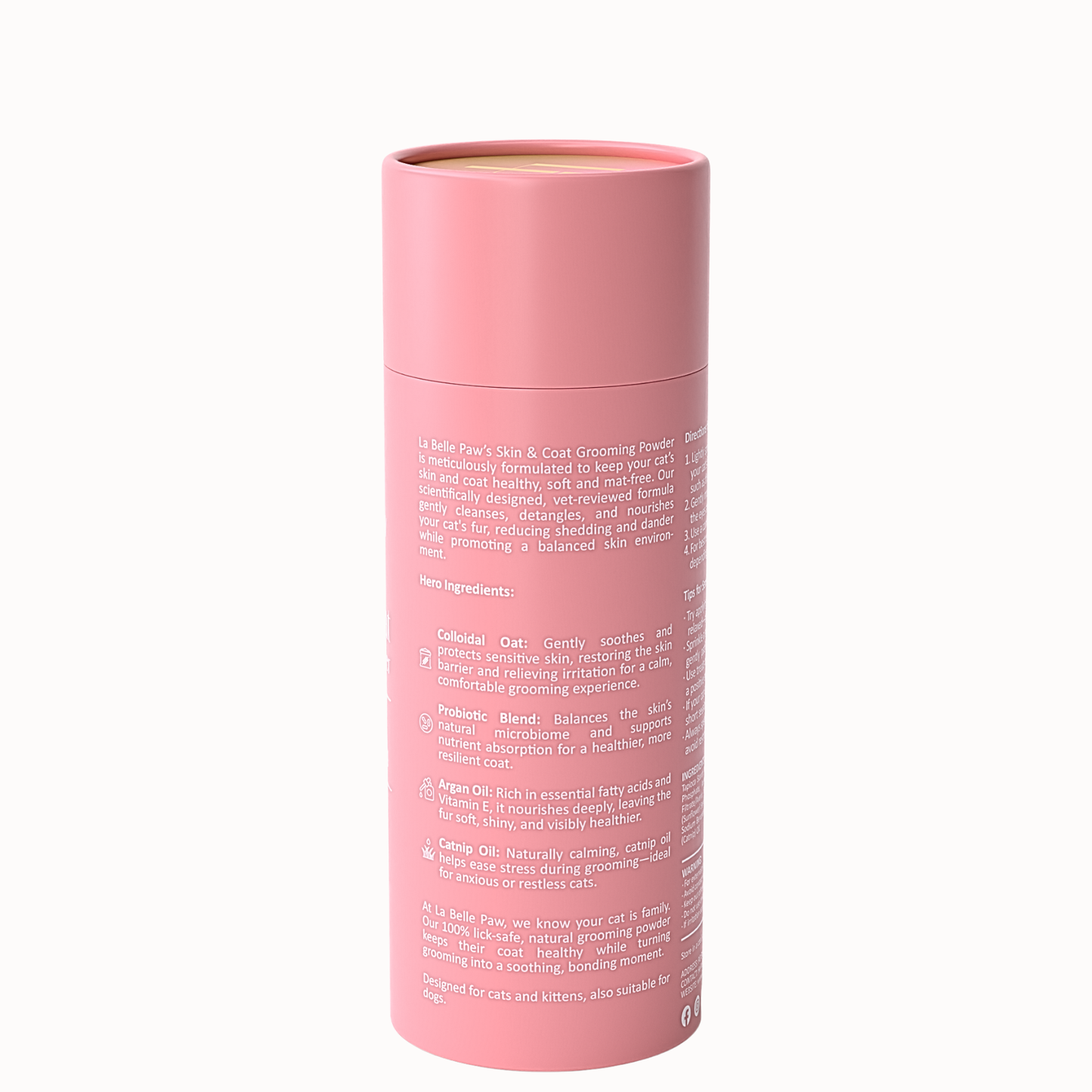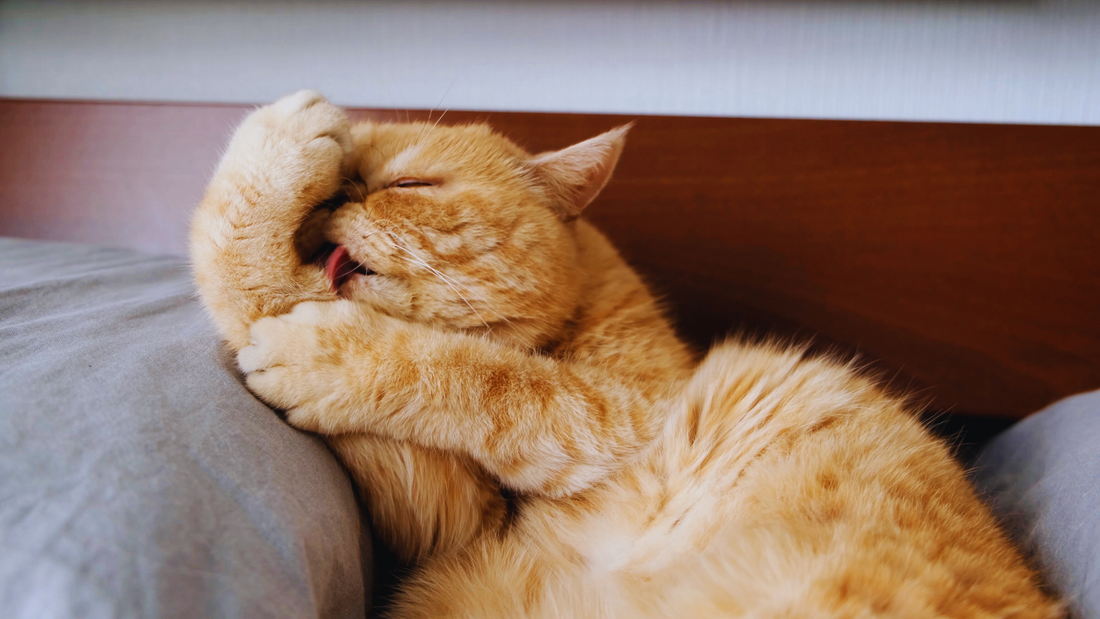
Why cat overgrooming?
Share
Cats are known for their meticulous grooming habits, often spending a significant portion of their day licking and cleaning themselves. However, when this behavior becomes excessive, it can lead to overgrooming, a condition that may result in hair loss, skin irritation, and other health issues. Let's delve into the reasons behind cat overgrooming, how to identify it, and effective strategies to address it, including the benefits of using a specialized skin and coat grooming powder.
What Is Overgrooming in Cats?
Overgrooming occurs when a cat obsessively licks, bites, or scratches its skin beyond normal grooming routines. This excessive behavior can lead to bald patches, redness, and even open sores on the skin. While grooming is a natural and healthy activity for cats, overgrooming indicates an underlying problem that needs attention.
Why Is My Cat Overgrooming?
Understanding the root cause of overgrooming is crucial for effective intervention. The reasons can be broadly categorized into medical and behavioral causes.
Medical Causes of Overgrooming
-
Allergies: Cats may develop allergies to certain foods, environmental factors like pollen, or flea bites, leading to itchy skin and subsequent overgrooming.
-
Parasites: Fleas, mites, or ticks can cause significant discomfort, prompting cats to groom excessively in an attempt to alleviate the irritation.
-
Infections: Bacterial or fungal infections can make the skin itchy or painful, leading to increased grooming behavior.
-
Pain: Underlying pain, such as arthritis or urinary tract infections, might cause a cat to lick specific areas excessively as a coping mechanism.
Behavioral Causes of Overgrooming
-
Stress and Anxiety: Cats are sensitive creatures, and changes in their environment, such as moving to a new home, the arrival of a new pet, or alterations in their daily routine, can cause stress. Overgrooming can serve as a self-soothing behavior in response to anxiety.
-
Boredom: Lack of mental and physical stimulation can lead to boredom, causing cats to overgroom as a way to pass the time or entertain themselves.
How to Identify Overgrooming in Cats
Recognizing the signs of overgrooming is the first step toward addressing the issue. Look out for:
-
Hair Loss: Noticeable bald spots or thinning fur, especially on the belly, legs, or sides.
-
Skin Irritation: Redness, rashes, or scabs on the skin.
-
Increased Hairballs: More frequent hairballs due to excessive ingestion of fur.
-
Behavioral Changes: Restlessness, irritability, or a noticeable increase in grooming frequency.
Steps to Address Cat Overgrooming
- Consult a Veterinarian
Before implementing any interventions, it's essential to rule out medical causes. A veterinarian can conduct a thorough examination, perform necessary tests, and identify any underlying health issues contributing to the overgrooming behavior.
- Address Medical Issues
If a medical condition is identified, follow the prescribed treatment plan. This may include medications for allergies, treatments for parasites, or pain management strategies.
- Reduce Stress and Provide Enrichment
-
Maintain a Consistent Routine: Cats thrive on predictability. Keeping feeding times, play sessions, and other daily activities consistent can help reduce stress.
-
Environmental Enrichment: Provide toys, scratching posts, and interactive play to keep your cat mentally and physically stimulated. This can help alleviate boredom and reduce stress-related overgrooming.
-
Safe Spaces: Ensure your cat has access to quiet, secure areas where they can retreat and feel safe, especially during times of change or upheaval in the household.
- Use Calming Aids
Products like synthetic pheromone diffusers can create a calming environment for your cat. These products mimic natural feline pheromones, helping to reduce anxiety and associated overgrooming behaviors.
The Benefits of Skin and Coat Grooming Powder
In addition to the above strategies, incorporating a specialized skin and coat grooming powder can offer several benefits:
-
Soothes Irritated Skin: Ingredients in the powder can help calm inflamed or itchy areas, providing immediate relief to your cat.
-
Promotes Healthy Fur Growth: Nutrients in the grooming powder can support the regrowth of healthy fur in areas affected by overgrooming.
-
Reduces Odor and Moisture: The powder can absorb excess moisture and neutralize odors, keeping your cat's coat fresh and clean.
-
Easy Application: Grooming powders are typically easy to apply and can be a non-intrusive way to manage skin health, especially for cats that may be sensitive to sprays or topical treatments.
Conclusion
Overgrooming in cats is a multifaceted issue that can stem from various medical or behavioral causes. By closely observing your cat's behavior, consulting with a veterinarian, and implementing appropriate interventions—including the use of skin and coat grooming powder—you can help your feline friend return to a healthy grooming routine. Remember, patience and consistency are key, and with the right approach, your cat can overcome overgrooming and enjoy a happier, more comfortable life.


